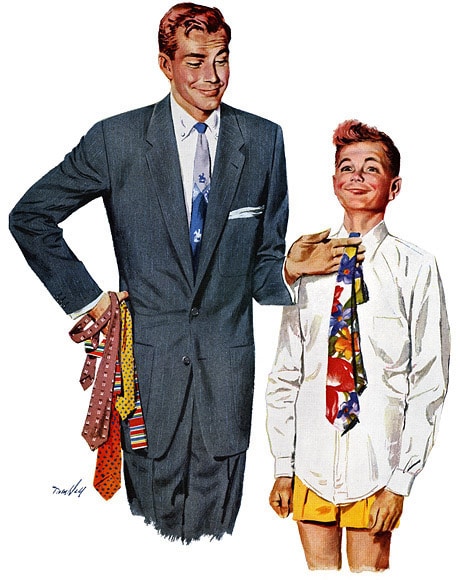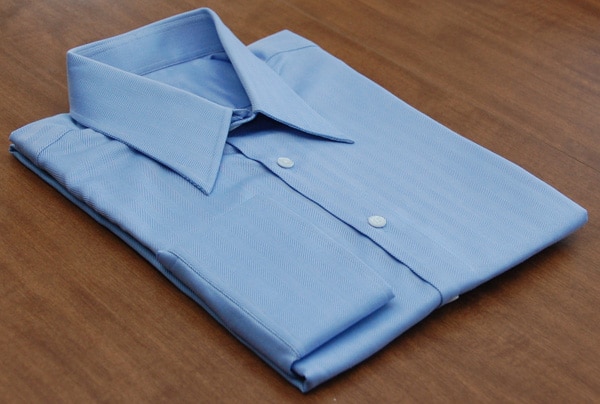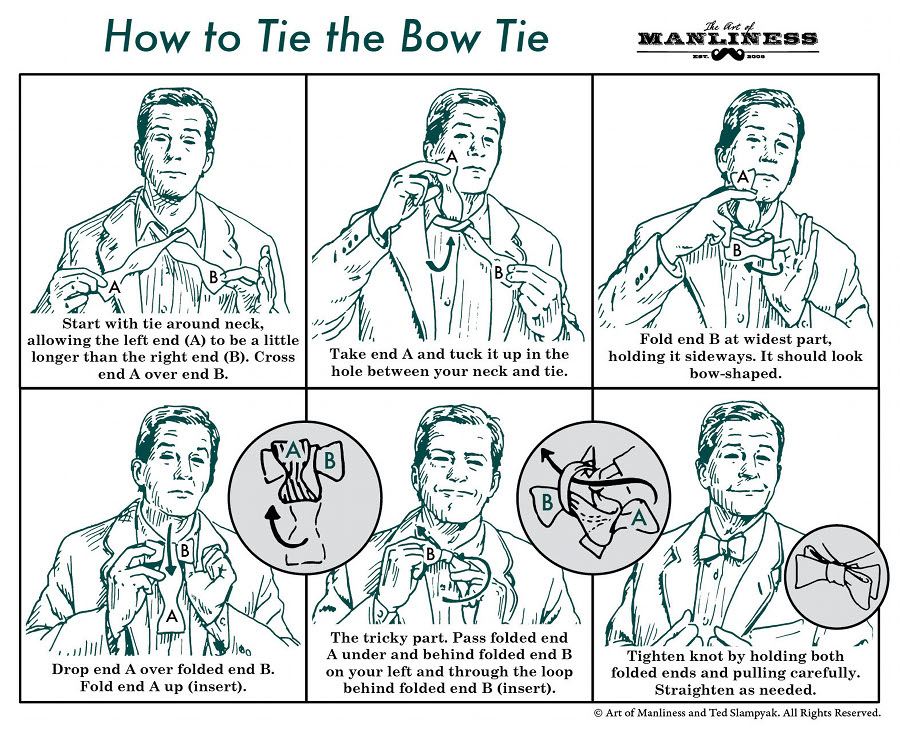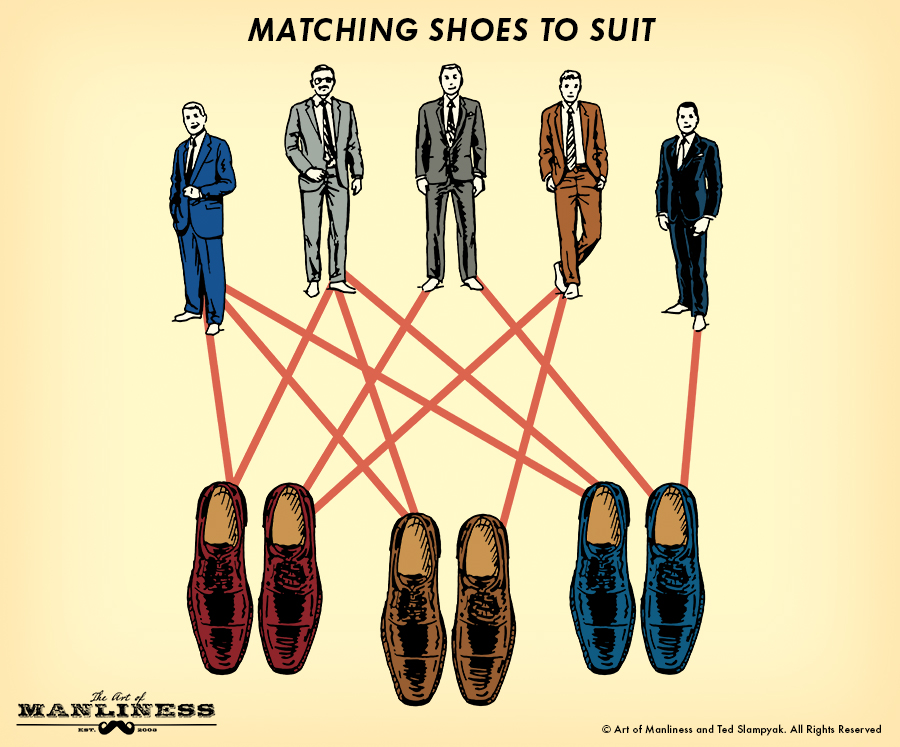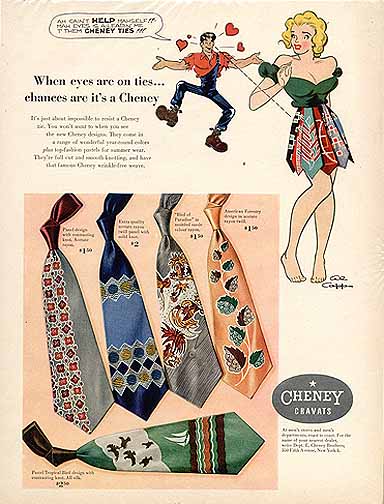When it comes to dressing for more upscale events, women have far more style decisions to make than men; we know we’ll be donning some version of a dress shirt and suit. But when it comes to adding the finishing touch — the tie — some men feel confused as to how to choose a tie that will complement the other elements in their ensemble.
The biggest mistake I see men make when trying to match their neckwear to their clothing is that they have bought the wrong tie for the clothing in their wardrobe.
Like trying to fit a square peg into a round hole, they will either frantically try to match garments together at the last moment or not care at all and reinforce the stereotype that men can’t dress themselves. In order to easily match your ties with your shirts and suits, you need to own neckwear that complements the more expensive clothing already in your closet.
Match your tie to your clothing, not your clothing to your tie.
The point is don’t buy a tie just because it looks great — buy neckwear that is of the right proportion for your body and is of a color and pattern that works well with your shirts and suits. You want your ties to match your clothing — not look good by themselves.
Coordinating your tie, dress shirt, and suit isn’t rocket science. All it requires is a basic understanding of proportion, pattern, and color which can be used to build an interchangeable wardrobe. Start with easy-to-match shirts and suits — then add a range of flexible neckties that accent and enhance the outfits you put together. Do this and you’ll find yourself wanting to wear a necktie more often as it adds color to your complexion and makes you look better overall.
See also: How to tie a tie
Watch the Video
Principles of Matching
The Necktie
Necktie Proportion
Necktie proportion relates to the necktie’s width and length in regards to a man’s body build and clothing style. A large man with large suits and a wide front is going to look best when he balances it with a wider than average tie that is long enough to reach his belt buckle. A petite gentleman has the opposite problem and should look for smaller neckties that are not only skinnier width-wise but also shorter in length. These special size ties can be found at many online retailers
For those of us who are close to average in size, proportion can become a problem when we purchase from high-end fashion designers or pick up vintage pieces from thrift shops. Average-sized men should try to wear ties ranging in width from 3 to 3.75 inches. Anything wider or thinner is best reserved for a man whose size calls for it — otherwise you are drifting into the realm of fashion, not style.
If you find yourself shopping for ties and need a quick way to measure the width, pull out a dollar bill. If the tie is close to Washington’s nose, you’re safe. If it extends out past the portrait frame or is behind his head — consider passing on the necktie.

Here we can see this necktie is well within the range of acceptability.
Necktie Color
There is not a perfect answer to which color goes best with any given outfit. Two factors that determine the right color for a man include the message he is trying to signal and the color combination that works best with the natural colors of his complexion.
For a muted but sophisticated look, consider pairing semi-solid and lightly patterned blue and green ties with cool blue colored clothing. If you’re looking to draw attention to yourself, opt for the stark contrast of a bold red colored tie on a light colored shirt. The red tie is called the “power tie” for a reason; this combination works well for presenters as it captures wandering eyes and points them right to the speaker’s face.
As far as what colors work well with a man’s particular features, you’ll want to mimic your natural contrast levels. Men with light colored hair and fair skin have low contrast and should stick with pastel and monochromatic color combinations. Men with dark hair and light skin are high contrast and will look best selecting color combinations which have clearly defined lines between them. If you have dark hair and medium to dark-colored skin, you can pull off both low and high-contrast tie and shirt/suit combinations. Your difficulty in this case will be separating acceptable suit/shirt/tie combinations from great looking suit/shirt/tie combinations. It’s a small distinction, and one best made by taking the clothing in your wardrobe and experimenting with various shades.
What about how the colors within a necktie work with one another? Multicolored neckties fall into two categories — ties whose colors complement one another and ties whose colors do not, because the tie designer/manufacturer did not create the tie with a discerning eye. The colors on the computer screen are not always true to real life, so I purposely choose to buy my ties through businesses whose judgment I trust. I can rest assured that 99% of the time my ties’ color combinations will be solid and complementary, even if the colors aren’t quite the same as what I saw online. Cheap ties and novelty neckwear often violate basic color combination rules and should be avoided.
Finally, it should be noted that 8% of men are colorblind and have great difficulty matching clothing. If you fall into this category, the best advice I can give is to ensure your wardrobe is interchangeable and to consider working with a trusted clothier, friend, or image consultant who can ensure you’re not wearing color combinations that clash.
Necktie Pattern
Matching neckties with strong patterns is the hardest neckwear issue for most men. This difficulty is directly reflected in neckwear sales — strongly patterned ties sell infrequently when compared to solid or semisolid ties. I rarely see them worn, and even then they are almost never worn to full effect. However when worn correctly, these rarely used neckwear gems can breathe life into an otherwise dull outfit.
The key to wearing patterned neckwear is to first ensure that the tie’s own colors do not clash (see above as to how to avoid this) and second, that the tie’s patterns do not conflict with any patterns in your shirt or suit.
When combining a patterned tie with a shirt and suit ensemble, ensure the pattern is not already present in the clothing. A thin-striped shirt should not be combined with a thin-striped tie; however, that same thin-striped shirt will work well with a polka dot, solid, or even thick regimental striped tie as the patterns are not similar. The reasoning behind all this is that similar patterns placed close to each other can create distorted visual effects such as the illusion of movement.
If you’re new to combining necktie patterns, the easiest way to add neckwear with complex patterns is to ensure your suit and shirt are pattern-less. If this isn’t possible, start with ties which utilize small repeating patterns such as dots, foulard, or small images (club or sport ties). Stripes are the next step, keeping in mind the rule of pairing them with shirt and suit combinations that either have no stripes or have ones that are of a different width and size than the tie’s stripes. Paisley and plaid ties are solid options as well; I don’t usually push them though as they are sometimes too eccentric for many men. Their larger patterns, however, make them even easier to match to a shirt and suit than striped ties.

Starting at the top: solid twill, semi-solid repeating pattern, dotted, repeating multi-pattern floral, paisley, thin stripe, thick regimental stripe, and plaid.
The Dress Shirt
The dress shirt is the first garment you should ensure matches your tie; next to the jacket, it is the most important clothing accessory in determining what tie color and pattern you can wear. However, unlike the jacket which you may peel off by lunchtime — your shirt stays on all day. Without a jacket, the dress shirt is the only surface upon which the tie sits, and if there is a color clash it will be impossible to hide. So get it right!
Starting off, the easiest shirts to match are solids. Whites offer a neutral base and match anything. Light blues are very close, as the few colors that would clash with them are seldom found in neckwear. Off-white and pastel colored shirts are easy to match as well, although you always want there to be a clear distinction between shirt and tie fabrics.
As for striped shirts, again you’ll want to avoid matching similarly sized stripes. If there is any doubt that the shirt stripes are too close in size or width to the tie’s pattern, move on and select another tie.
With check fabrics, look to match the casualness of the pattern with a tie that is more playful in tone. Club, foulard, and paisley ties all work, as do solid wool knitted ties with square ends. More advanced pattern matchers can combine various sized checks, but leave this to those with practice as the look can come off as too busy and distract attention from your face.
Finally, you should always avoid color combinations that are either too jarring for your lack of contrast or too monotone as to wash out your complexion.

A solid navy blue suit fabric paired with a blue contrast miniature herringbone shirt fabric. The top tie matches OK, but the second tie matches better and the final yellow & navy striped necktie creates a very regal and bold combination.
The Suit
Dark solid colored suits, especially grey and navy blue, go well with most tie color combinations by default. They are the easiest to match as most tie makers assume their wares will be worn with one; if you have already matched the tie to the shirt, either a grey or navy suit will more often then not complement your ensemble.
The exception to this is when you take dark ties with blue tints and try to wear them with dark grey or black suits. Although it can be done, blue tinted ties rarely complement these dark suits, and they should instead be reserved for navy blue, blue, or lighter colored suits where the color combination is more natural. If you’re looking to combine a dark tie with a grey or black suit, look to deep purple or a dark tinted red.
If you’re looking to draw attention to yourself while wearing a dark suit, select a bold and rich colored necktie with a small repeating pattern. A solid tie is an option as well, but when it’s woven from a bright hue it can be too bright and come off as informal. Instead, choose a deeper and darker solid color tinted with black — this will still work with the dark suit while drawing the attention you seek.
Light colored suits invite darker colored ties for contrast yet can be worn with pastels successfully if the man wearing them has light hair and skin with little contrast. Bright and warm hues such as yellow, red, orange, and pink should be avoided.
Striped suits fall under the same rule mentioned previously — do not mix clothing with the same size patterns. Thus if you’re wearing a pin-stripe suit with a thick butcher stripe shirt, I would advise you to pair it with a dot or foulard tie. Trying to fit in a regimental stripe or even a solid colored necktie is pushing the boundaries of looking sharp vs. looking like a clown.
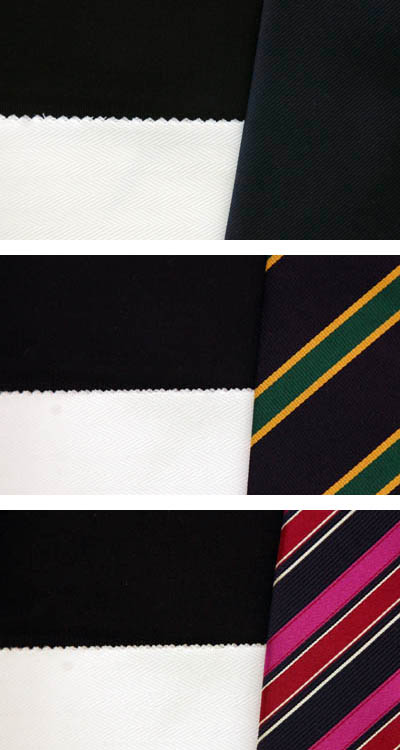
Navy blue suit and a white dress shirt. At the top we have a very subdued combination that signals formality yet allows a man to blend in. In the middle a classic stripe, with a hint of color for individuality. The bottom is a bright attention-grabbing piece of neckwear that would be used to call attention to the wearer.
Sport Jackets and Blazers
Similar to a suit, blazers call for more formal ties and are traditionally paired with stripe or club ties. Sport jackets, on the other hand, are often more informal, and depending on the tone of the fabric can call for a wool patterned necktie or silk foulard or paisley. Consider matching smooth silk ties with rough weave jackets, while reserving the knitted neckwear for sport jackets that need a more casual feel. In both situations, the wearer should create balance by paying attention to the aforementioned rules of matching.
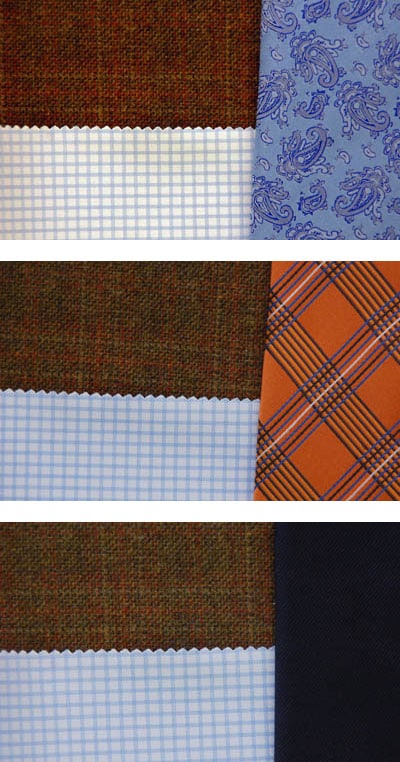
A tweed jacket worn with a small blue check dress shirt – 3 tie combinations. Notice how the navy tie darkens the whole look while the light blue paisley brightens it.
Other Factors to Consider When Matching a Tie
- Tie Knot Style and Relation to Collar Style – Closely related to proportion, tie knot style is important when you are wearing a dress shirt with a spread collar or a narrow point collar. Each of these extreme angles calls for a tie knot that fits into the space afforded by the collar. Remember that bigger tie knots require more tie, while smaller knots require less. This sounds intuitive, but problems arise when a large man with a spread collar tries to use a regular size tie when tying a full Windsor knot. His options end up being wearing a tie knot that is dwarfed by the space in his collar or having a proportional knot on a tie that is 2 inches too short.
- Necktie Length – Most ties targeting Americans are 53 to 58 inches long. On an average-sized man this is long enough to accommodate any tie knot and with a little practice ensure the tie ends at the belt buckle. Larger men should look for ties that are 60-plus inches in length and shorter men should consider having their necktie less than 54 inches in length. Click here to see an offering of extra long neckties. For shorter ties, visit Josh Rogers over at ShortShrifted as he has assembled a great short tie guide.
- Wearing a Vest – A vest can conceal 75% of a tie, which isn’t necessarily a negative. Wearing a vest may enable a conservative gentlemen the opportunity to wear a more brightly colored tie without overwhelming his outfit. A dark three-piece navy suit and white dress shirt instantly appears more lively when paired with a pink and blue paisley tie.
- Some neckties are more formal than others. For a complete rundown of necktie and formality levels, read this great guide to neck tie formality from Hendrik Pohl at Tie-Necktie.com.
- Wool & Woven Ties – Non-silk ties such as wools and wovens are casual pieces of neckwear. Often solid, they do come in a wide range of weaves, fabrics, and styles. These uncommon ties also have a unique matching factor: texture. Typically you want to match rough weaves with smooth fabric jackets.
- Pocket squares are the final touch; add them after the tie. Never match pocket squares exactly with your neckwear; instead, try to make it so the pocket square complements the whole outfit.
Conclusion
Remember that mixing color and patterns is both an art and science. Although I’ve laid out a nice set of guidelines, they are by no means unbreakable laws. Instead, use this tie matching guide to build confidence, and then experiment on your own. You will find that occasionally a tie and shirt just go well together despite violating the “rules of style.”



